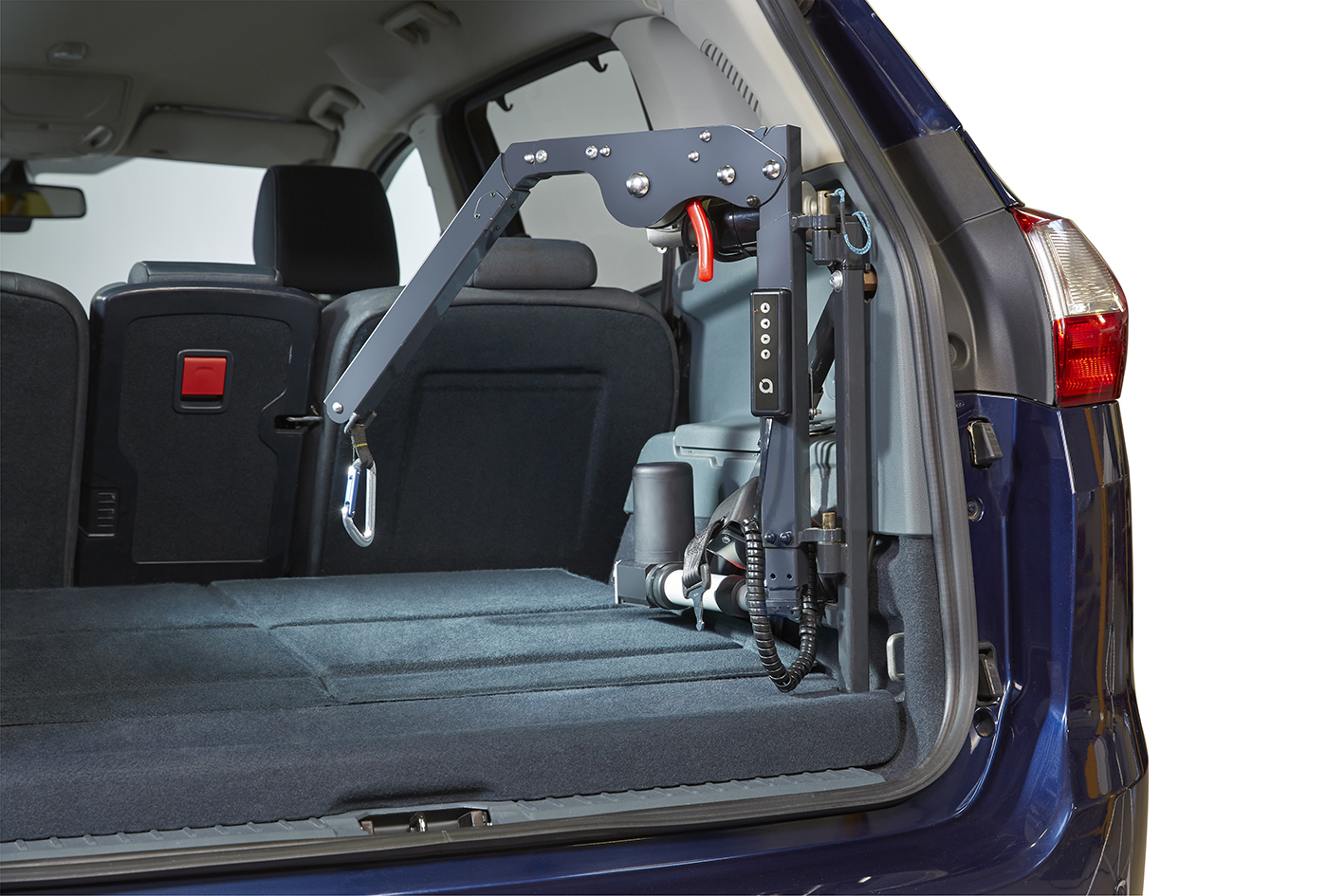Vehicle hoists for people with a wide range of mobility issues come in a variety of shapes and sizes and selecting the right one for you can be a bit overwhelming. This guide seeks to lay out in clear terms the different kinds of products on the market, there pros and cons and circumstances in which each option might be the best choice.
Types of hoists
In terms of the main types of vehicle hoists you could consider, there are two main choices: person hoists and wheelchair or mobility scooter boot hoists. Of course, within these two categories there are also a range of options, which we will look at below. Whether a person lift or a wheelchair/scooter lift is the right option will depend on a variety of factors.
Pros & cons of person hoists
Person hoists can be ideal for either drivers or passengers who may either have someone to load their wheelchair or scooter into the vehicle, have enough mobility to do it themselves, or do not need a wheelchair or mobility scooter but need help getting into their vehicle. While person hoists can be used independently they are a great option for carers or loved ones to remove the need for physical strength when helping the person in question into the vehicle for a manual transfer. Person hoists can be fitted in more or less any vehicle, negating the need for a costly upgrade to a WAV (Wheelchair Assisted Vehicle). They are also a social option as users can sit in the front or back depending on installation. Clearly, the person hoists still leaves a need for a method of transferring any wheelchair or scooter into the vehicle.
Pros & cons of boot hoists
Boot hoists are ideal for people who's primary objective is to load their wheelchair or scooter into the car boot without heavy lifting. This also manifests in a boost to the freedom of the individual. It could be someone with a carer or partner or someone who is on their own and capable of getting into the vehicle after loading the mobility scooter or wheelchair with the assistance of the boot hoist. An important factor in this decision is also the weight of the mobility aid, which combined with the mobility of the user and/or carer or partner will be a factor. The obvious con to a boot hoist is that it deals with the scooter or wheelchair, but not the person. However, depending on mobility and assistance this may not present a problem. Depending on the size and weight of the scooter or wheelchair, you may need a two way, four way or six way hoist. The logistics of this may depend on the size of your vehicle.
Of course, it may not be a question of which type suits your need - you may require both options, which depending on your vehicle could also be possible.

